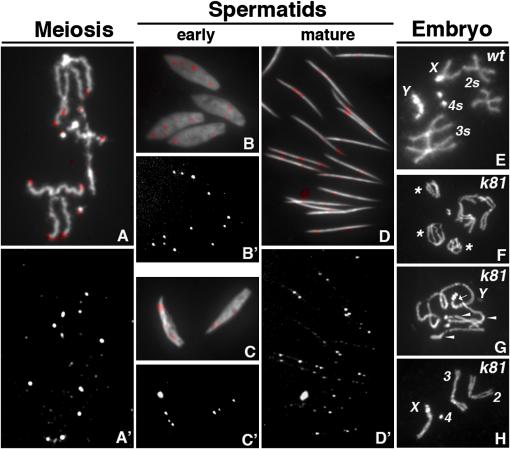Fig. 1.
K81 binds and protects paternal telomeres. For A–D, samples were prepared from testes mutant for k81 but expressing GFP-K81. (A) A nucleus in meiosis II was stained with anti-GFP. Chromosomes are in white, and K81 signals in red. (A′) GFP signals only. (B–D) Merged images of GFP-K81 foci in spermatids, with DAPI signals in white and GFP signals in red. (B′, C′, and D′) GFP signals only. (E–H) Images of mitotic chromosomes from embryos. (E) From embryo with a WT father. (F–H) From embryos with k81 fathers. In F, one-half of the genome engaged in intrachromosomal telomere fusions forming circular chromosomes (marked by asterisks), and the other one-half had normal, separated telomeres. In G, one-half of the genome (marked by arrowheads) has separated telomeres, and the other one-half engaged in interchromosomal fusions forming a chain starting from the paternal Y chromosome (marked with arrow). H shows a haploid nucleus with all of the chromosomes labeled.

